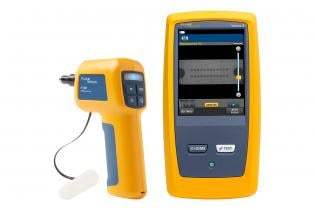All You Need to Find Out About Robotic Vision and Its Applications in Advanced Optical Dimension Equipments
Robotic vision represents a significant innovation in the junction of computer system vision, expert system, and artificial intelligence. This innovation enhances the accuracy of optical measurement systems, making it possible for real-time data evaluation and enhanced quality assurance. Its impact spans multiple sectors, from manufacturing to healthcare. However, the progressing landscape of robotic vision questions about future capabilities and applications (robotic vision). What developments lie ahead in this transformative field?
Comprehending Robotic Vision: Trick Concepts and Technologies
Robotic vision encompasses the modern technologies and approaches that allow equipments to translate and recognize aesthetic details from their atmosphere. This area incorporates components of computer system vision, expert system, and artificial intelligence to facilitate automatic decision-making based upon visual data. Trick ideas include photo processing, which involves the improvement and analysis of images to draw out meaningful attributes, and object acknowledgment, which enables machines to recognize and categorize objects within a scene.

The Combination of Robotic Vision With Optical Dimension Equipments
As sectors progressively require precision and efficiency, the assimilation of robot vision with optical measurement systems has actually become a transformative strategy. This harmony permits robots to regard and analyze their environments, improving the ability of optical dimension systems to examine and examine objects with unequaled precision. By outfitting optical sensing units with advanced imaging technologies, robot vision allows real-time information collection and handling, promoting prompt changes to dimension criteria.
The mix equips automated systems to detect variants in measurements, surface area high quality, and alignment, which are essential in high quality control procedures. Improved formulas, such as artificial intelligence, further enhance this integration by boosting the systems' ability to adjust to different settings and scenarios. The assimilation not just improves dimension procedures but likewise minimizes errors, making certain that products fulfill stringent market criteria, therefore solidifying the role of robot vision in the future of optical measurement systems.
Applications of Robotic Vision in Production
In modern production environments, using vision systems has actually revolutionized manufacturing procedures by making it possible for machines to carry out tasks with impressive accuracy and rate. Robotic vision systems are significantly used for quality control, where they inspect items for problems and warranty adherence to specs. These systems make use of cameras and advanced algorithms to analyze products in real-time, considerably lowering the risk of human error.
Additionally, robot vision promotes automation in setting up lines, permitting robots to precisely recognize parts and construct them with very little downtime. This innovation additionally enhances inventory monitoring, as vision systems can check supply levels and spot discrepancies, guaranteeing a seamless supply chain.
In addition, robotic vision aids in the execution of clever factories, where information from vision systems can be my link integrated with various other technologies to enhance workflows. On the whole, the applications of robot vision in making demonstrate its critical function in enhancing performance, high quality, and productivity throughout numerous markets
Robotic Vision in Health Care: Revolutionizing Individual Care

In recovery, robot vision help in monitoring client progression and customizing treatment sessions to private requirements. It supports physician by automating jobs such as information collection and client monitoring, enabling more time to concentrate on direct client communication. Furthermore, robot vision enhances telemedicine by making it possible for remote medical diagnosis and online consultations, connecting the gap in between people and medical care providers. Overall, the application of robotic vision in healthcare is reinventing patient treatment, leading to enhanced end results, efficiency, and patient fulfillment.
Future Trends and Developments in Robotic Vision Modern Technology
The fast development of robot vision modern technology promises to even more enhance its applications across different sectors, consisting of healthcare. Future fads indicate a significant change in the direction of integrating synthetic intelligence and maker discovering, making it possible for systems to pick up from vast datasets and enhance accuracy gradually. Boosted sensor modern technologies and deep knowing formulas are anticipated to fine-tune things acknowledgment capacities, enabling robots to interpret intricate environments better.

Additionally, the combination of enhanced reality (AR) with robot vision will likely transform exactly how robotics aid in surgical procedures and diagnostics. This harmony will certainly help with real-time data visualization, enhancing decision-making processes. Furthermore, miniaturization of components will certainly bring about even more compact and versatile robotic vision systems suitable for a range of tasks. As these innovations unravel, markets will certainly witness increased automation and efficiency, solidifying robot vision as a cornerstone of cutting-edge technical options.
Often Asked Concerns
What Are the Key Elements of a Robot Vision System?
The major parts of a robot vision system include electronic cameras for photo capture, cpus for information evaluation, formulas for analysis, and actuators for activity. Together, these elements allow robots to perceive and interact with their environment effectively.
How Does Robotic Vision Improve Accuracy in Measurements?
Robotic vision boosts dimension accuracy by utilizing advanced imaging technologies, allowing accurate object discovery and spatial evaluation. This ability lowers human mistake, boosts repeatability, and enables for real-time changes, inevitably boosting overall measurement dependability and effectiveness.
What Industries Benefit The Majority Of From Robotic Vision Innovation?
Numerous markets profit substantially from robot vision innovation, consisting of manufacturing, medical care, agriculture, and logistics. These markets make use of improved visit homepage accuracy, efficiency, and automation, causing improved efficiency and lowered operational prices in their respective processes.
Can Robotic Vision Systems Operate In Low-Light Issues?
Robotic vision systems can indeed operate in low-light problems, using sophisticated sensors and algorithms to enhance photo quality. This capability permits them to carry out efficiently in different atmospheres, including industrial and monitoring applications, despite very little lighting.
What Are the Prices Related To Carrying Out Robotic Vision?
The prices connected with implementing robot vision vary substantially, affected by parts such as video cameras, software application, and assimilation. Added expenses include maintenance, training personnel, and potential upgrades to existing systems, Read Full Article which can build up with time.